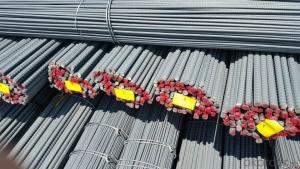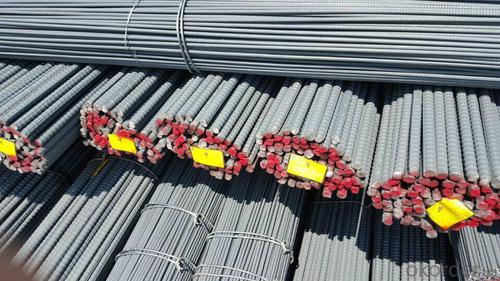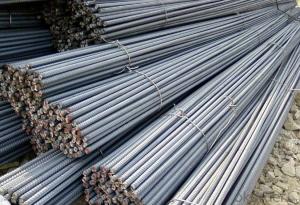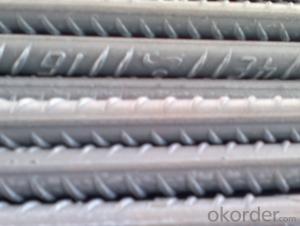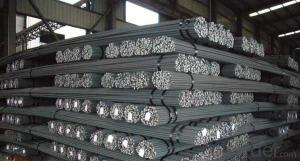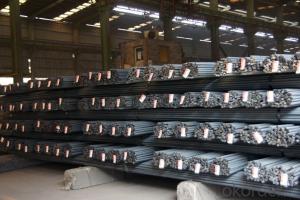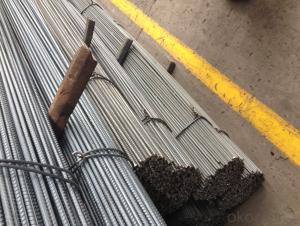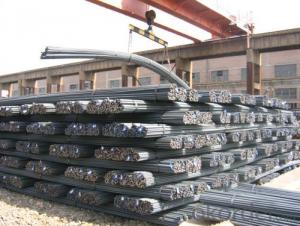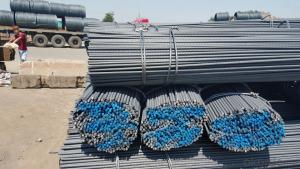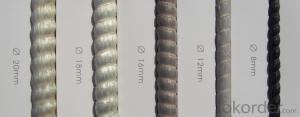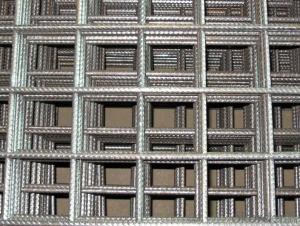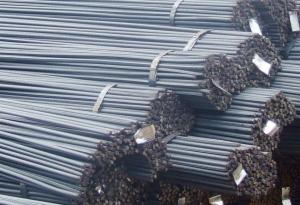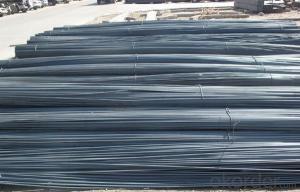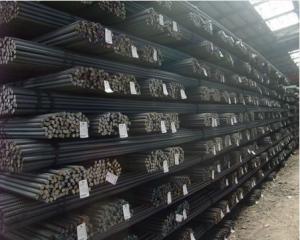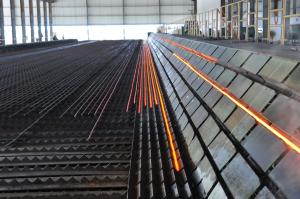Reinforcing Deformed Steel Bars in Grade HRB400 with Best Quality
- Loading Port:
- Tianjin
- Payment Terms:
- TT OR LC
- Min Order Qty:
- 25 m.t.
- Supply Capability:
- 20000 m.t./month
OKorder Service Pledge
OKorder Financial Service
You Might Also Like
Specification
OKorder is offering high quality Hot Rolled Rebars at great prices with worldwide shipping. Our supplier is a world-class manufacturer of steel, with our products utilized the world over. OKorder annually supplies products to Africa, North American and Asian markets. We provide quotations within 24 hours of receiving an inquiry and guarantee competitive prices.
Product Applications:
Deformed bar is widely used in buildings, bridges, roads and other engineering construction. Big to highways, railways, bridges, culverts, tunnels, public facilities such as flood control, dam, small to housing construction, beam, column, wall and the foundation of the plate, deformed bar is an integral structure material. With the development of world economy and the vigorous development of infrastructure construction, real estate, the demand for deformed bar will be larger and larger.
Product Advantages:
OKorder's Hot Rolled Rebars are durable, strong, and resist corrosion.
Main Product Features:
· Premium quality
· Prompt delivery & seaworthy packing (30 days after receiving deposit)
· Corrosion resistance
· Can be recycled and reused
· Mill test certification
· Professional Service
· Competitive pricing
Product Specifications:
Manufacture: Hot rolled
Grade: HRB400 – HRB500
Certificates: ISO, SGS, BV, CIQ
Length: 6m – 12m, as per customer request
Packaging: Export packing, nude packing, bundled
Grade | Technical data of the original chemical composition (%) | ||||||
C | Mn | Si | S | P | V | ||
HRB400 | ≤0.25 | ≤1.60 | ≤0.80 | ≤0.045 | ≤0.045 | 0.04-0.12 | |
Physical capability | |||||||
Yield Strength (N/cm²) | Tensile Strength (N/cm²) | Elongation (%) | |||||
≥400 | ≥570 | ≥14 | |||||
Theoretical weight and section area of each diameter as below for your information:
Diameter(mm) | Section area (mm²) | Mass(kg/m) | Weight of 12m bar(kg) |
6 | 28.27 | 0.222 | 2.664 |
8 | 50.27 | 0.395 | 4.74 |
10 | 78.54 | 0.617 | 7.404 |
12 | 113.1 | 0.888 | 10.656 |
14 | 153.9 | 1.21 | 14.52 |
16 | 201.1 | 1.58 | 18.96 |
18 | 254.5 | 2.00 | 24 |
20 | 314.2 | 2.47 | 29.64 |
22 | 380.1 | 2.98 | 35.76 |
25 | 490.9 | 3.85 | 46.2 |
28 | 615.8 | 4.83 | 57.96 |
32 | 804.2 | 6.31 | 75.72 |
36 | 1018 | 7.99 | 98.88 |
40 | 1257 | 9.87 | 118.44 |
50 | 1964 | 15.42 | 185.04 |
FAQ:
Q1: Why buy Materials & Equipment from OKorder.com?
A1: All products offered by OKorder.com are carefully selected from China's most reliable manufacturing enterprises. Through its ISO certifications, OKorder.com adheres to the highest standards and a commitment to supply chain safety and customer satisfaction.
Q2: How do we guarantee the quality of our products?
A2: We have established an advanced quality management system which conducts strict quality tests at every step, from raw materials to the final product. At the same time, we provide extensive follow-up service assurances as required.
Q3: How soon we can delivery the goods ?
A3: We have a mill with 20000mts of capacity per month. We can delivery the goods within in one month ,as long as your order quantity less than 20000mts
Q4:What's your payment terms ?
A4:Mostly,we collect the money by T/T and LC at sight . We also accept time LC at 90/120 days sight.
Images
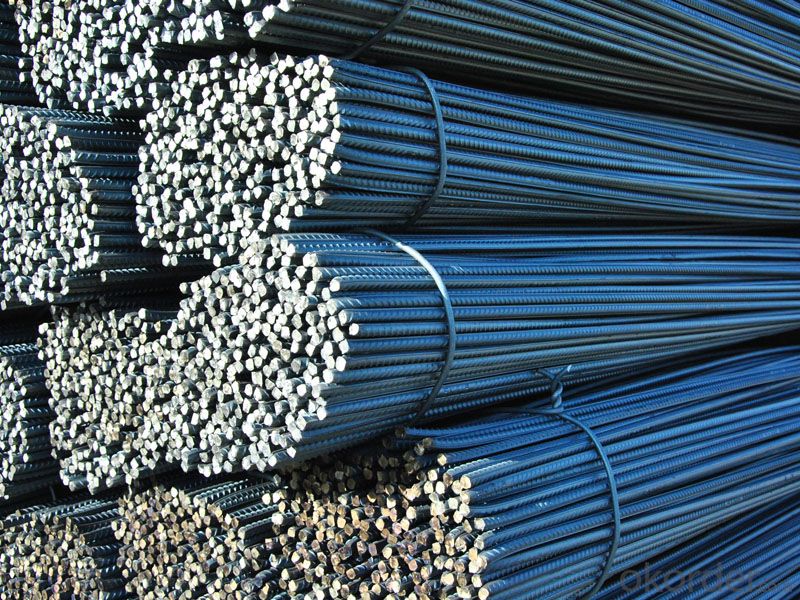
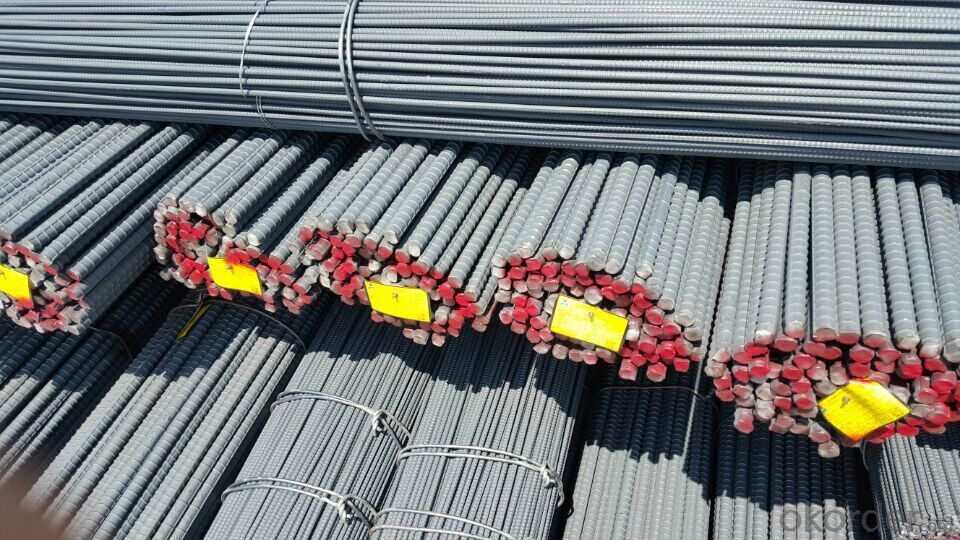
- Q: Can steel rebars be used in cold weather conditions?
- Yes, steel rebars can be used in cold weather conditions. Steel is known for its durability and strength, making it a suitable material for construction projects even in cold climates. However, it is important to take certain precautions when using steel rebars in cold weather. For instance, the rebars should be properly stored and protected from moisture to prevent rusting. Additionally, the concrete mix used with the rebars should be adjusted to ensure it can withstand freezing temperatures and avoid cracking. Overall, with proper planning and precautions, steel rebars can be effectively used in cold weather conditions.
- Q: Can steel rebars be used in structures with high chloride ion concentration?
- Steel rebars should generally not be used in structures with high chloride ion concentration, as the presence of chloride ions can lead to corrosion of the steel. Chloride ions can penetrate the concrete and come into contact with the steel reinforcement, causing it to corrode and weaken over time. This corrosion can eventually lead to structural failure and compromise the safety and integrity of the structure. To mitigate the risk of corrosion in high chloride ion environments, alternative materials such as stainless steel rebars or fiber-reinforced polymers (FRP) can be used. Stainless steel rebars are more resistant to corrosion compared to regular steel rebars due to their higher chromium content. FRP rebars, on the other hand, are non-metallic and do not corrode, making them a suitable option for structures exposed to high chloride ion concentrations. It is important to consider the specific environment and exposure conditions when selecting the appropriate material for reinforcement in structures. Consulting with a structural engineer and following relevant building codes and standards can help ensure the use of suitable materials and prevent potential corrosion issues in high chloride ion environments.
- Q: How do steel rebars affect the crack resistance of concrete structures?
- Steel rebars play a crucial role in enhancing the crack resistance of concrete structures. When incorporated into the concrete, rebars act as reinforcement and provide additional strength to the structure. The primary purpose of steel rebars is to absorb tensile forces that concrete alone cannot withstand. Concrete is excellent at resisting compression forces but is relatively weak when it comes to tension. As a result, when a concrete structure is subjected to tensile stresses, such as those caused by external loads or temperature changes, cracks can form. By placing steel rebars within the concrete, the structure gains the ability to resist these tension forces. When the concrete experiences tensile stresses, the rebars bear the load and distribute it throughout the structure, preventing the formation and propagation of cracks. The rebars effectively bridge the gaps in the concrete, reinforcing it and increasing its overall strength. Moreover, steel rebars also help to control the size and width of cracks that do occur. By limiting the width and propagation of cracks, the rebars prevent them from becoming larger and compromising the structure's integrity. This is especially important in situations where the structure is exposed to excessive forces or environmental conditions that can induce cracking. Additionally, steel rebars also improve the durability of concrete structures by increasing their resistance to corrosion. Concrete is porous, and over time, water and other corrosive substances can penetrate and deteriorate the material. However, when rebars are used, they are typically encased in a protective layer of concrete, known as the cover. This cover acts as a barrier, preventing the penetration of corrosive agents and protecting the rebars from corrosion. This, in turn, ensures the long-term durability and crack resistance of the concrete structure. In summary, steel rebars significantly enhance the crack resistance of concrete structures by providing reinforcement and absorbing tensile forces. They prevent the formation and propagation of cracks, control their size and width, and increase the overall strength and durability of the structure.
- Q: What are the common sizes of steel rebars used in construction?
- The common sizes of steel rebars used in construction vary depending on the specific application and engineering requirements. However, there are several standard sizes that are commonly used in the industry. The most frequently used rebar sizes range from #3 to #18. These numbers represent the diameter of the rebar in eighths of an inch. For example, a #3 rebar has a diameter of 3/8 inch, while a #18 rebar has a diameter of 2 1/4 inches. In terms of metric measurements, the most common rebar sizes range from 10mm to 40mm in diameter. These sizes are often designated by their nominal diameter in millimeters, such as 10mm, 12mm, 16mm, 20mm, 25mm, 32mm, and 40mm. The selection of the appropriate rebar size depends on factors such as the load-bearing capacity required, the structural design, and the type of construction project. Smaller diameter rebars, like #3 or 10mm, are typically used in lighter construction projects or for smaller concrete elements such as walls or slabs. On the other hand, larger diameter rebars, like #18 or 40mm, are commonly used in heavy-duty applications such as bridges, high-rise buildings, or large-scale infrastructure projects. It is important to note that different countries or regions may have their own specific standards for rebar sizes, so it is crucial to consult local building codes and regulations to ensure compliance.
- Q: What are the different methods for cutting steel rebars on-site?
- There are several methods available for cutting steel rebars on-site, depending on the specific requirements and limitations of the project. Some of the common methods include: 1. Manual Cutting: This method involves using handheld manual tools such as rebar cutters or bolt cutters to cut through the steel rebars. It is suitable for smaller projects or areas where power tools may not be accessible. 2. Abrasive Cutting: Abrasive cutting, also known as grinding or cut-off saws, utilizes a high-speed rotating disc with abrasive particles to grind through the steel rebars. This method is effective for cutting rebars of various sizes and is commonly used in construction sites. 3. Torch Cutting: Using oxy-fuel or plasma torches, this method involves heating the steel rebars to a high temperature and then cutting through them using the intense heat. Torch cutting is suitable for thicker and larger rebars but requires caution and safety measures due to the open flame involved. 4. Shear Cutting: Shear cutting involves using hydraulic or mechanical shears to cut through the steel rebars. This method is efficient for cutting rebars quickly and accurately, especially for larger projects. 5. Hydraulic Cutting: Hydraulic cutters use hydraulic pumps to generate high pressure, which is then used to power the cutting blade. This method is commonly used for heavy-duty cutting tasks and can cut through thick rebars with ease. 6. Electric Cutting: Electric cutters, such as electric rebar cutters or portable band saws, are powered by electricity and provide a clean and precise cut. They are commonly used in construction sites where power is readily available. It is essential to consider the specific requirements of the project, including the size and thickness of the rebars, available power sources, and safety considerations, when selecting the appropriate method for cutting steel rebars on-site.
- Q: Can steel rebars be used in industrial construction projects?
- Yes, steel rebars can be commonly used in industrial construction projects. They provide structural reinforcement to concrete structures, enhancing their strength and durability. Rebars are widely used in various industrial applications such as bridges, factories, power plants, and high-rise buildings to ensure the structural integrity and safety of these projects.
- Q: What are the guidelines for proper tying of steel rebars in concrete structures?
- To ensure the structural integrity and durability of concrete structures, it is crucial to adhere to guidelines for the proper tying of steel rebars. Here are some important guidelines to consider: 1. Rebar Placement: Before tying, accurately position the rebars according to the structural drawings and design specifications. Place them at the designated locations and depths, ensuring proper spacing to provide the necessary strength and reinforcement. 2. Tying Tools: Utilize suitable tools like pliers or rebar tying machines for secure and proper tying. Ensure that the tools are in good condition and appropriate for the size and type of rebars being used. 3. Tying Technique: Employ a consistent and efficient tying technique. Begin by securely holding the rebars together at the intersection point. Wrap the tie wire around both rebars multiple times, ensuring tight and firm connections. Properly twist and neatly cut the tie wire to avoid any protrusions. 4. Tie Wire Selection: Use high-quality tie wires with sufficient strength to withstand tension and load requirements. Opt for corrosion-resistant materials such as galvanized steel or stainless steel to prevent rusting and deterioration over time. 5. Tying Spacing: Adhere to the specified tying spacing as per the design requirements. Adequate spacing between ties helps maintain rebars in their designated positions, preventing displacement during concrete pouring and subsequent curing. 6. Tying Quantity: Tie rebars at suitable intervals to ensure ample connection and reinforcement. The number of ties needed depends on the size, shape, length of rebars, and structural design specifications. 7. Tying Consistency: Maintain consistency in tying throughout the entire concrete structure. Uneven or inconsistent tying can result in weak points, reduced reinforcement, and compromised structural integrity. 8. Tying Safety: Prioritize safety during the tying process. Wear appropriate personal protective equipment (PPE) like gloves and safety glasses to prevent injuries. Take precautions to avoid tripping hazards and ensure a safe working environment. 9. Inspection and Quality Control: Regularly inspect the tied rebars to ensure compliance with design specifications and quality standards. Conduct visual inspections and perform pull tests to assess the strength and effectiveness of the ties. 10. Compliance with Codes and Standards: Adhere to local building codes, industry standards, and engineering guidelines specific to your region. These codes provide essential requirements for rebar tying, ensuring the durability and safety of the concrete structure. By following these guidelines, construction professionals can enhance the strength, stability, and longevity of concrete structures through proper tying of steel rebars.
- Q: How are steel rebars connected or joined together?
- Different methods are used to connect steel rebars depending on the specific application and structural requirements. Steel rebars are typically connected or joined together using the following techniques: 1. Overlapping: An effective method involves overlapping two rebars to create a continuous length of reinforcement. The overlapping length must meet the specified design requirements and is usually secured using steel tie wires or mechanical connectors. 2. Welding: Another option is to join steel rebars through welding. This process involves melting the ends of the rebars and fusing them together using heat. Welding is suitable for connecting rebars in pre-fabricated structures or when high strength and durability are necessary. 3. Mechanical couplers: Pre-fabricated devices known as mechanical couplers provide a threaded connection between two rebars. These couplers are typically screwed onto the ends of the rebars, creating a strong and reliable connection. Mechanical couplers are commonly used in construction projects where fast installation and ease of use are important. 4. Lap splicing: A widely used method in reinforced concrete structures involves connecting two rebars by overlapping them and securing the overlap with steel tie wires or mechanical connectors. This approach provides adequate strength and continuity. 5. Grouted splicing: In grouted splicing, the ends of two rebars are embedded into a sleeve or coupling filled with grout or epoxy resin. This ensures a strong bond between the rebars, enhancing load transfer and corrosion resistance. It is crucial to adhere to applicable building codes and structural design specifications when selecting the connection method for steel rebars. This ensures the overall integrity and safety of the structure.
- Q: How do steel rebars affect the structural integrity of a building?
- Steel rebars play a crucial role in enhancing the structural integrity of a building. They are used to reinforce concrete structures by providing extra strength and resistance to various forces, such as tension, compression, and bending. The inclusion of steel rebars helps to distribute loads more evenly, prevent cracks, and increase the overall durability and stability of the building.
- Q: Can steel rebars be used in sustainable construction practices?
- Yes, steel rebars can be used in sustainable construction practices. Steel is a highly durable material that can be recycled, reducing the need for new production and minimizing environmental impact. Additionally, steel rebars provide strength and structural integrity to constructions, allowing for longer lifespan and reduced maintenance requirements. By incorporating steel rebars in sustainable construction practices, we can promote resource efficiency and minimize the overall environmental footprint.
Send your message to us
Reinforcing Deformed Steel Bars in Grade HRB400 with Best Quality
- Loading Port:
- Tianjin
- Payment Terms:
- TT OR LC
- Min Order Qty:
- 25 m.t.
- Supply Capability:
- 20000 m.t./month
OKorder Service Pledge
OKorder Financial Service
Similar products
Hot products
Hot Searches
Related keywords
